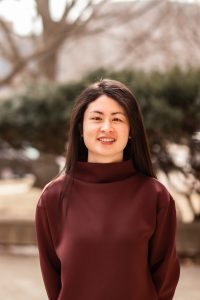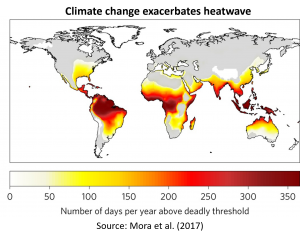Preparing Communities for Climate Change: CCEE’s Lu Liu Receives Grant to Determine Climate Change Vulnerabilities in Rural and Urban Communities
Author: Sarah Hays
Author: Sarah Hays
From small farms to big cities, natural disasters, rising temperatures and other factors of climate change impact everyone. Lu Liu, assistant professor in the Department of Civil, Construction and Environmental Engineering, is using modeling to look into the future on the long-term impacts of climate change for two different ends of the population spectrum: urban and rural communities.

From the University of Iowa’s Center for Global and Regional Environmental Research, Liu received the first grant of her career: a $30,000 seed grant for a one-year study looking at the vulnerability of climate change impacts for urban and rural areas. Taking an analytical approach, Liu is working to discover the future impacts of climate change for these communities and how they are different – so these communities have a chance to adapt to the future, accounting for their own vulnerabilities, before it is too late.
“In this research, we want to look at several climate-related indicators such as air pollution, water scarcity, extreme heat waves and extreme precipitation,” Liu said. “Climate change is expected to exacerbate these extreme events. So how would this affect the urban and rural populations?”
Liu’s research is using three different computerized models for this study: a climate model, an urban growth model and an integrated assessment model. Each model brings a different angle to the table, accounting for several different moving components that are critical to the study of climate change impact in rural and urban areas. All of these different models are what could bring new information to the surface, Liu says.

“In this study, we are using several models – a climate model, an urban growth model, and an integrated assessment model,” Liu said. “We couple all of these models together to see how climate change impacts urban and rural populations in different ways. That is the novelty of this research, all the different data being analyzed in a consistent framework.”
With three different models covering two very different communities, it can seem like a lot of separate information – but the three computational models all work together to create data. The integrated assessment model will be integrated with output from the climate model to produce climate-related indicators, which will be fed into the urban growth model to assess ramifications on urban and rural populations under different growth scenarios.
The urban growth model was developed by a professor here at Iowa State that is collaborating with Liu on this project: Yuyu Zhou, in Geological and Atmospheric Sciences at Iowa State.
Both Liu and Zhou are teaching courses on climate change in their departments – and once this year-long study is complete, Liu plans to implement this research into their courses.
Through Liu’s research, climate-related indicators can come to surface for both urban and rural communities, and policymakers and communities can use this information to prepare for future impacts of climate change.
“I think the greatest challenge of the 21st century is satisfying the demand for water, energy and food in a sustainable way. So my research uses a computational approach to understand the interactions and tradeoffs between water, energy and climate systems,” Liu said. “Long-term, this can help to identify the adaptation strategies so communities can be better prepared for their climate change vulnerabilities.”